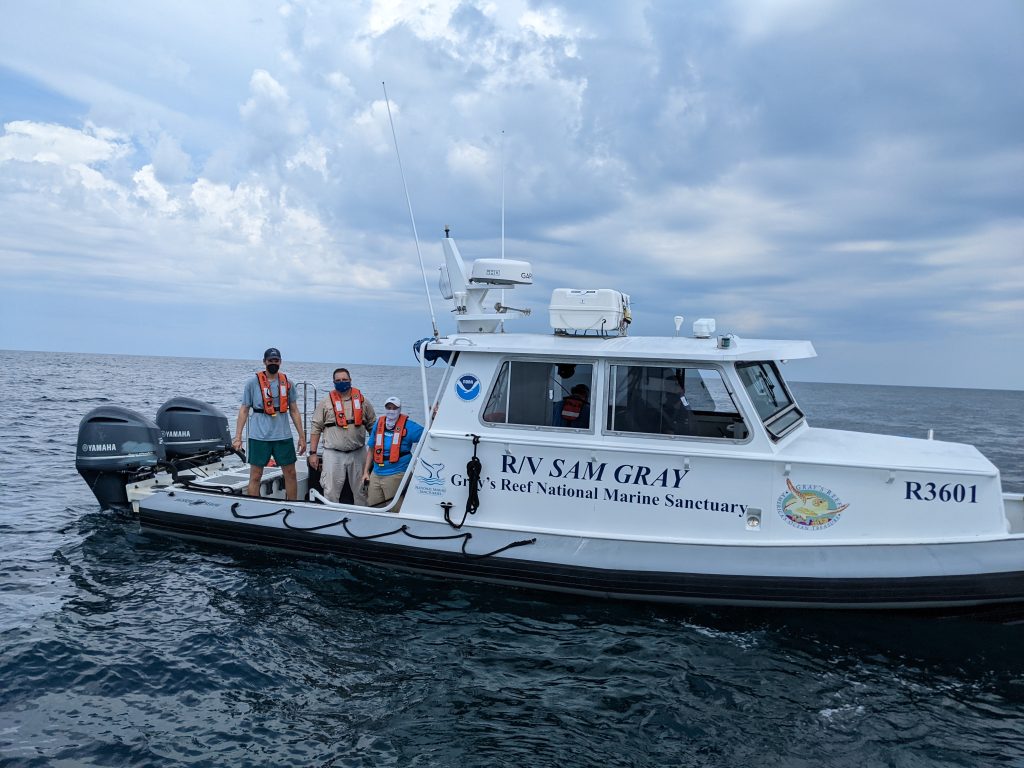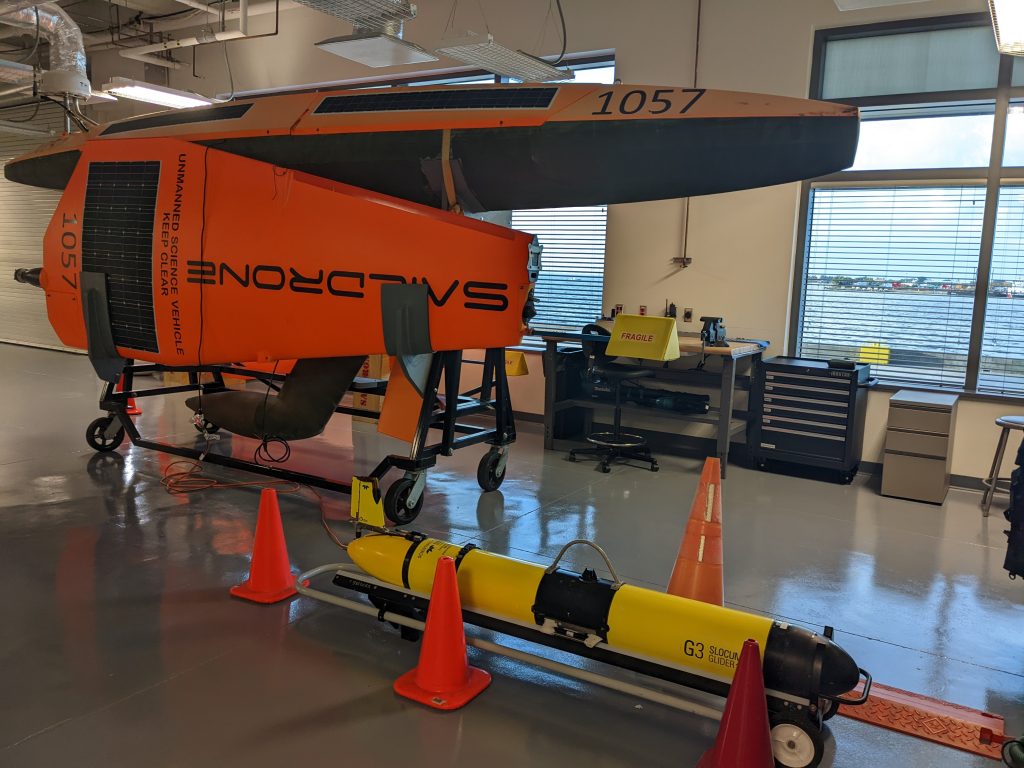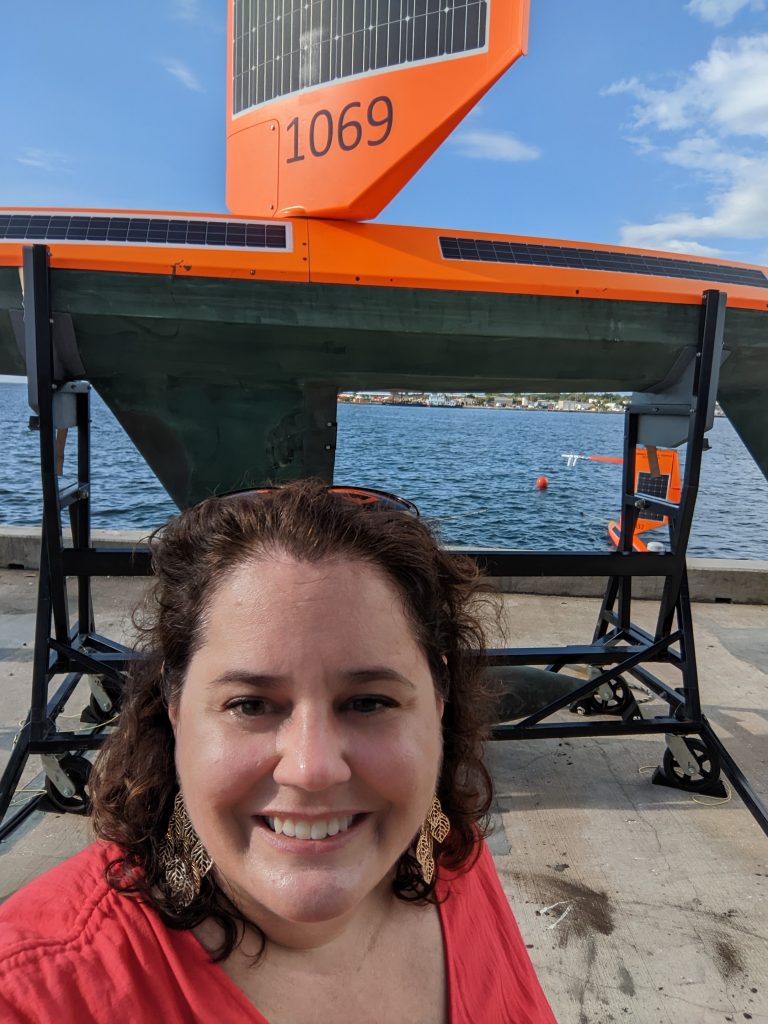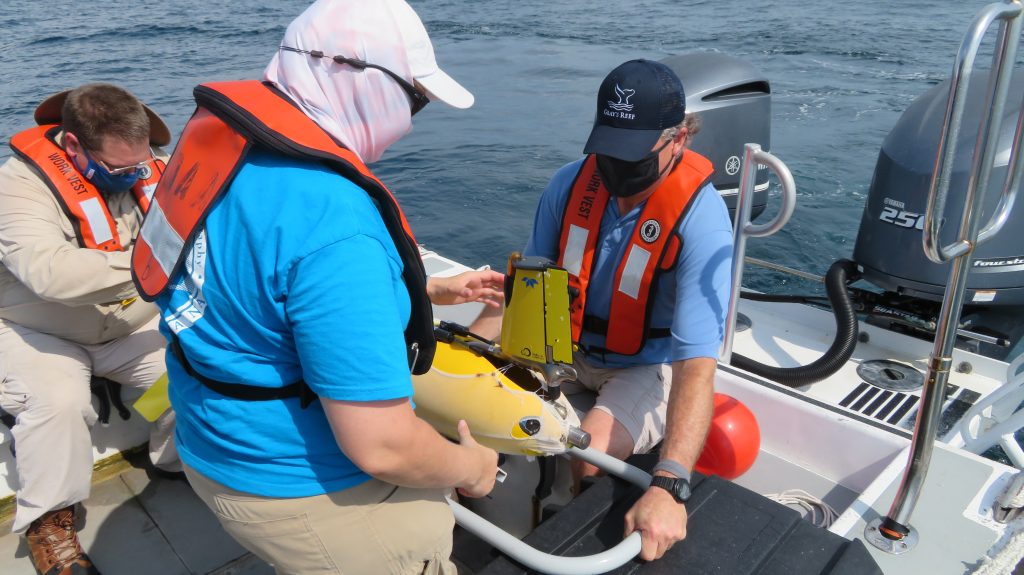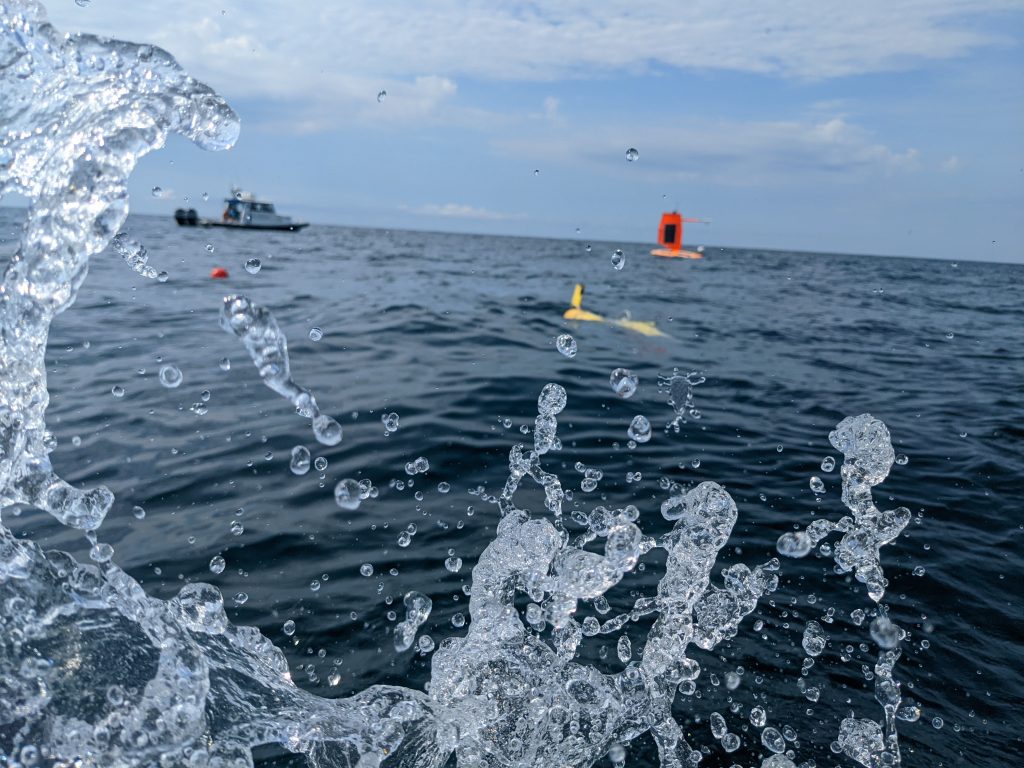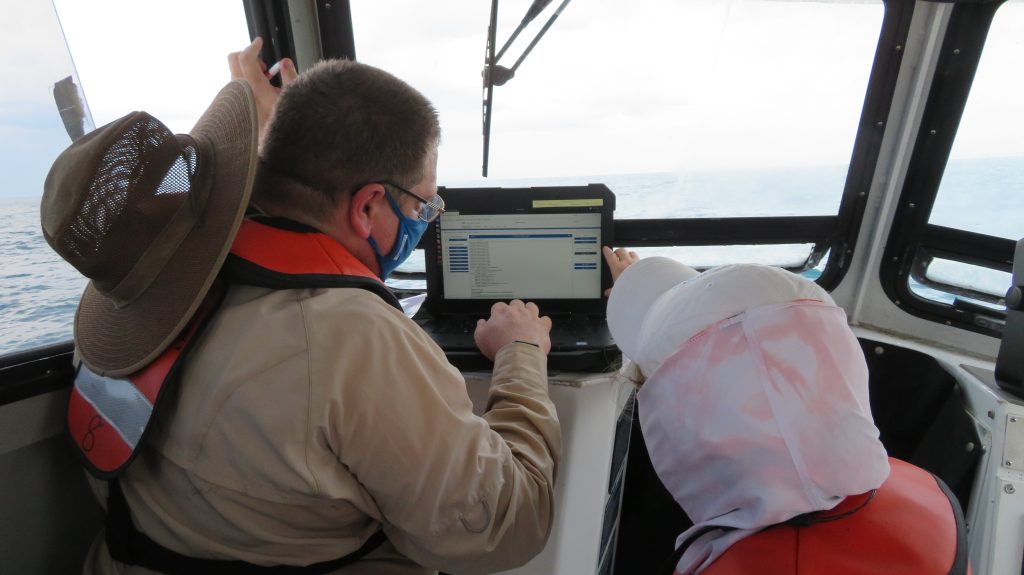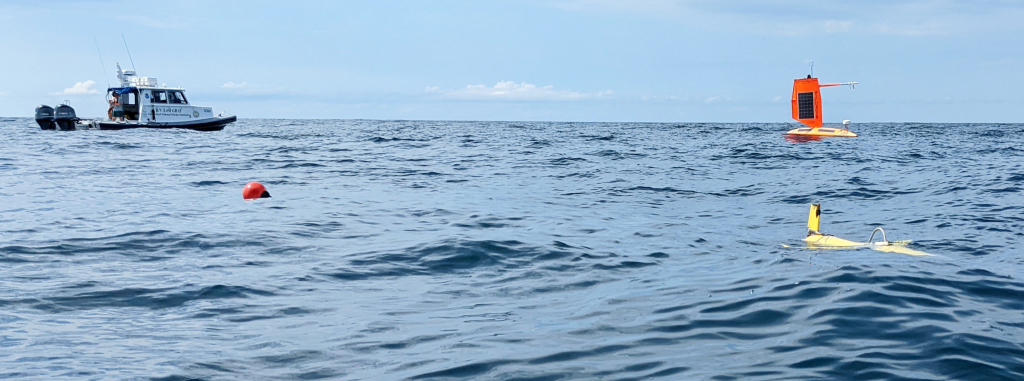
SECOORA’s glider, Franklin, has a friend for his first mission of the 2022 hurricane season. Franklin is flying under the Saildrone SD-1059 for the next 30-60 days collecting water column data to help forecasters better understand the forces that drive hurricane intensity. Click here for Franklin data.
Franklin is part of a larger National Oceanic and Atmospheric Administration (NOAA) coordinated effort to collect data in the Atlantic Ocean and Gulf of Mexico during the 2022 hurricane season. Gliders are collecting data under the surface of the ocean, while Saildrones are being used on the surface to collect surface oceanographic and meteorological data.
During a hurricane, collecting data offshore is dangerous and is best done by in-situ or uncrewed ocean instruments. The gliders collect ocean temperature and salinity data throughout the water column. Water temperature data is vital to understanding the amount of energy, in the form of heat, available to feed hurricanes.
Franklin’s on a Mission Collecting Water Column Data
Dr. Catherine Edwards led the deployment of Franklin off the coast of Georgia, in Gray’s Reef National Marine Sanctuary, on August 3. Franklin is collecting data as it profiles underneath Saildrone SD-1059. The Saildrone will collect surface ocean data, such as water temperature and salinity as well as meteorological data. Click here for Franklin data.
During the course of the 2022 hurricane season, the SECOORA glider team will deploy 2-3 more gliders off the coasts of Florida and Georgia. The SECOORA Glider team has been deploying gliders during hurricane season since 2018 in the Gulf of Mexico and the Atlantic Coast. This is Saildrone’s first year tracking conditions in the Gulf of Mexico as part of the NOAA observing efforts. Accuweather published a story on Saildrone’s recent deployment in St. Petersburg, FL here.
Coordinated Approach to Collecting Data to Improve Hurricane Forecasts

Gliders and Saildrones are just two of the technologies being used to collect data this hurricane season. NOAA is also funding the deployment of small uncrewed aircraft systems (i.e., drones) that will be deployed into hurricanes for the first time from NOAA’s Hurricane Hunter aircraft (source).
John Cortinas, Director of NOAA’s Atlantic Oceanographic and Meteorological Laboratory (AOML) stated in NOAA and Saildrone launch seven hurricane-tracking surface drones, “This season, NOAA will work with numerous partners to gather oceanic and atmospheric observations using a suite of platforms to monitor the conditions that play a role in hurricane intensity changes. Storms that intensify rapidly can cause extensive damage and loss of life and real-time observing systems are crucial to better understanding the atmospheric and oceanic processes that lead to the formation and intensification of these hurricanes.”
For more information please contact communications@secooraorgpact.wpengine.com .
Related news

SECOORA Funding Opportunity Announcement: Letters of Intent Solicitation
SECOORA will submit a coordinated regional proposal in response to the anticipated FY 2026 Implementation of the U.S. Integrated Ocean Observing System (IOOS) funding opportunity. Letters of Intent to be considered for inclusion in SECOORA’s full proposal are due September 9, 2025.

SECOORA Hosts the First Surface Elevation Table (SET) Community of Practice Virtual Workshop
The SECOORA SET Workshop was virtual on July 17, 2025. More than 50 Community of Practice members and stakeholders joined this collaborative workshop to discuss SET monitoring, coastal resilience, and data-driven decision making in the Southeast.

The Sounds of the Sound: Connecting the Port Royal Sound Community with What’s in the Water
Port Royal Sound in Beaufort, South Carolina is a thriving haven for animals, plants, and people. Research focused on listening to the animals that live in the Sound – specifically the resident dolphins – connects the community with the underwater world without having to go swimming.
